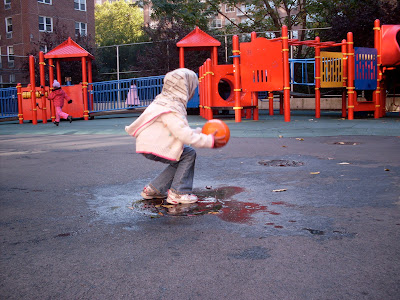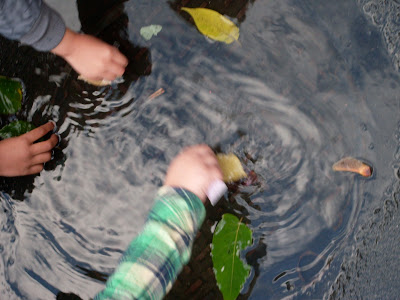We have taken a step back from projects, first allowing our class to develop a culture of thinking and thinking language. We do this by focusing on building a 'thinking' foundation, posing questions, modeling thinking and wondering aloud, and providing opportunities for engagement. Yet, even with project work taking a backseat for the moment - the visible interest in water and puddles is too evident to ignore.
In an effort to make the children's thought process about puddles and water visible we created a See/Think/Wonder chart. This is a thinking routine, you can read more about thinking routines in this paper by Project Zero and you can find many more great resources about thinking routines here at Project Zero's Visible Thinking Site.
First we observed a photo of children exploring a puddle the day before. Then...
Children respond to what they see: water, stuff in the water, it's a
puddle, the water is shaking, and we can touch the water
Children respond to what they think they know about puddles: that puddles are very big or very small, puddles look like circle, and puddles are watery but you can jump in them.
And children wonder: If we could get bottles to measure water.
As I write this I realize I have forgotten to pose an important question to the children. What is interesting about puddles? Looking at the images below I can make assumptions - why I think puddles are of interest to children. If you look at the images below, what would you say provokes interest? This is an important step as an educator, forming our own theories and then revisiting those theories...
First we observed a photo of children exploring a puddle the day before. Then...
 | |
Children respond to what they think they know about puddles: that puddles are very big or very small, puddles look like circle, and puddles are watery but you can jump in them.
And children wonder: If we could get bottles to measure water.
As I write this I realize I have forgotten to pose an important question to the children. What is interesting about puddles? Looking at the images below I can make assumptions - why I think puddles are of interest to children. If you look at the images below, what would you say provokes interest? This is an important step as an educator, forming our own theories and then revisiting those theories...
 |




No comments:
Post a Comment